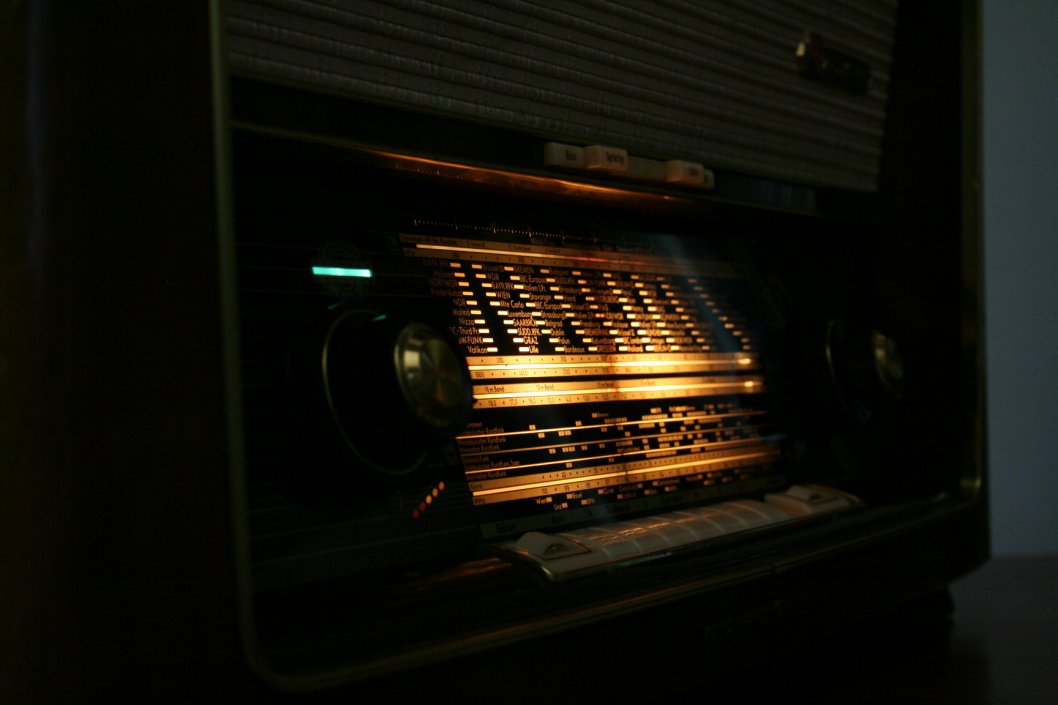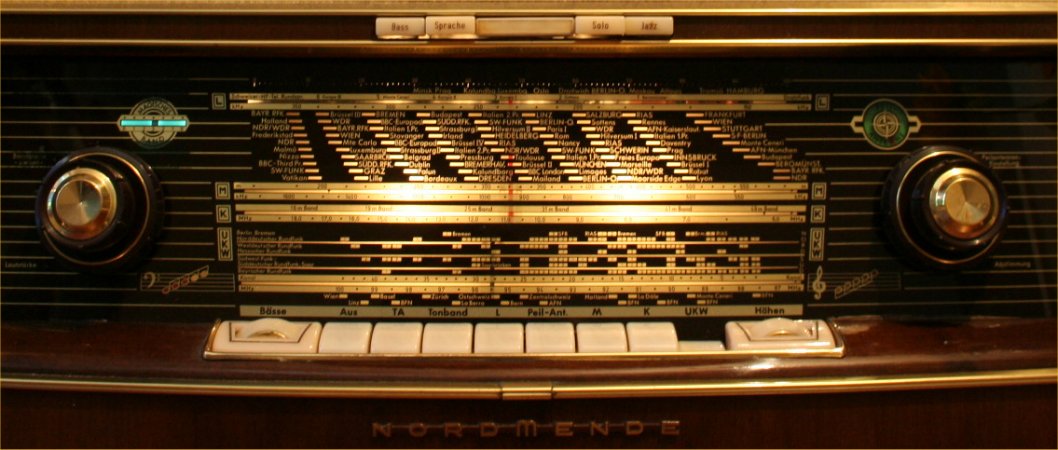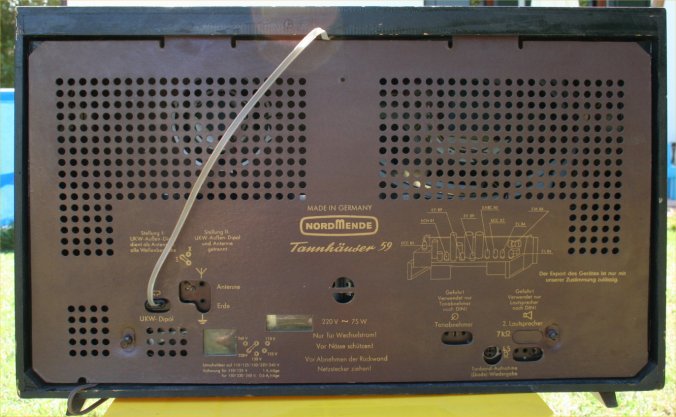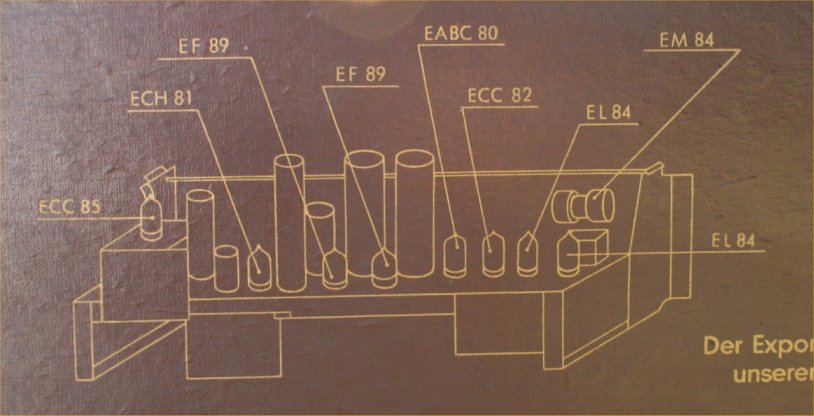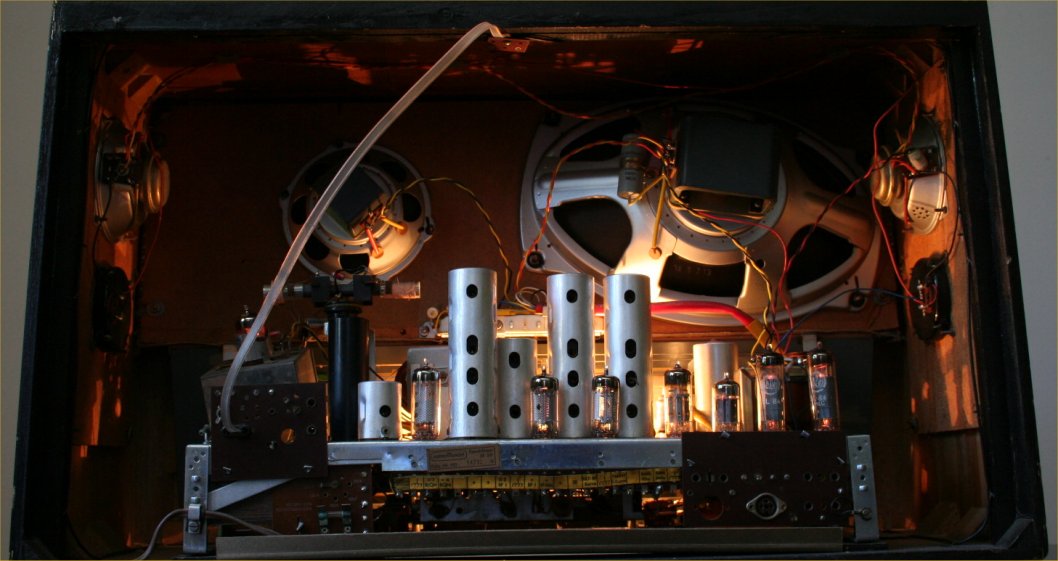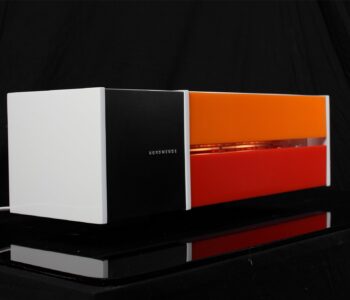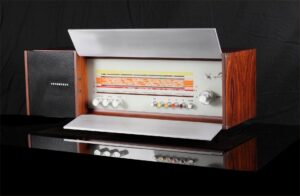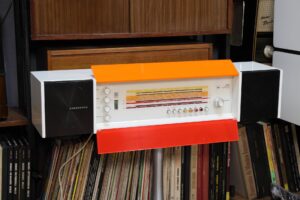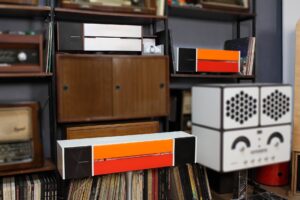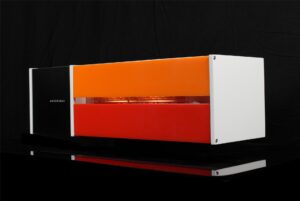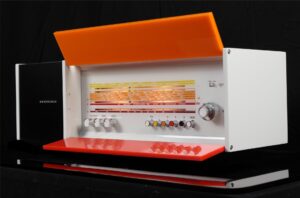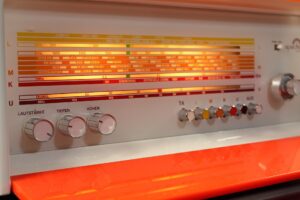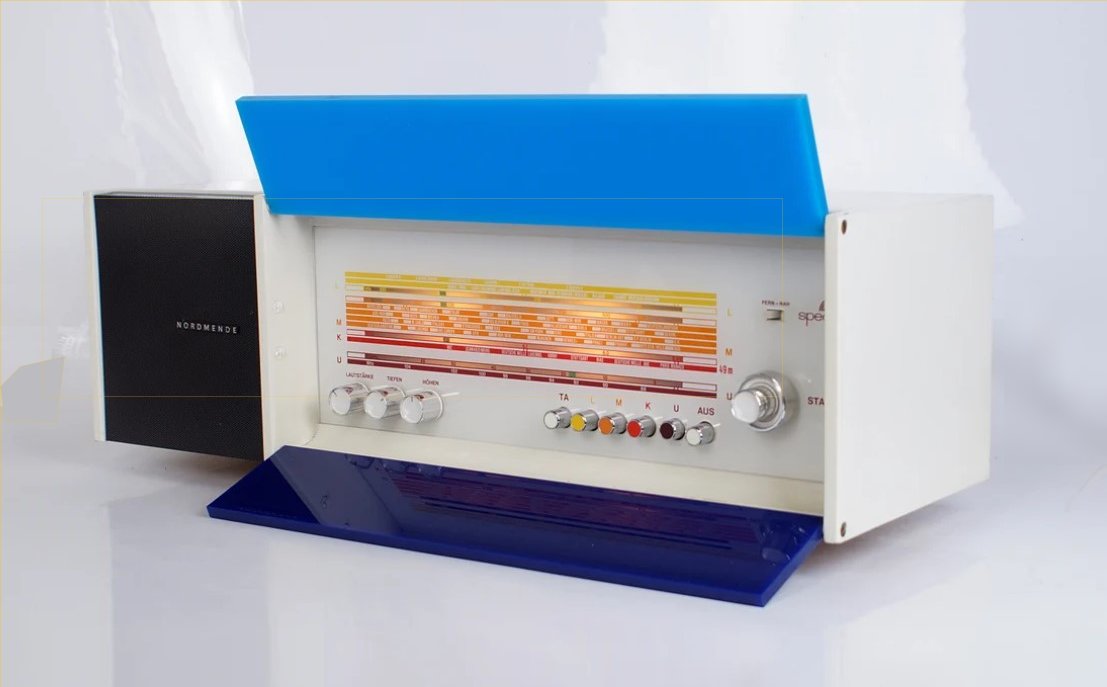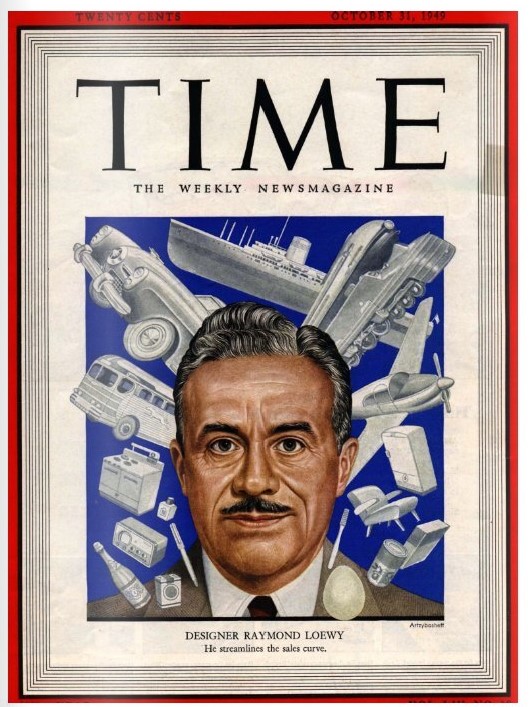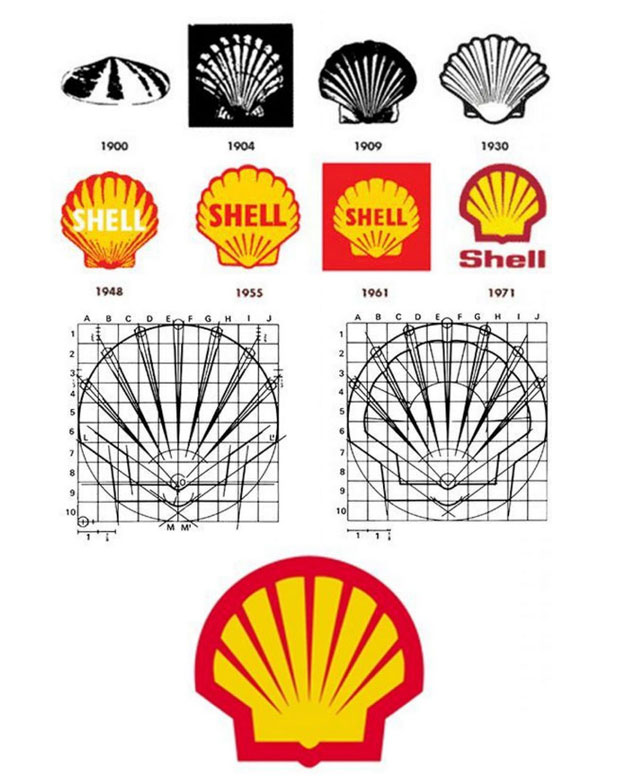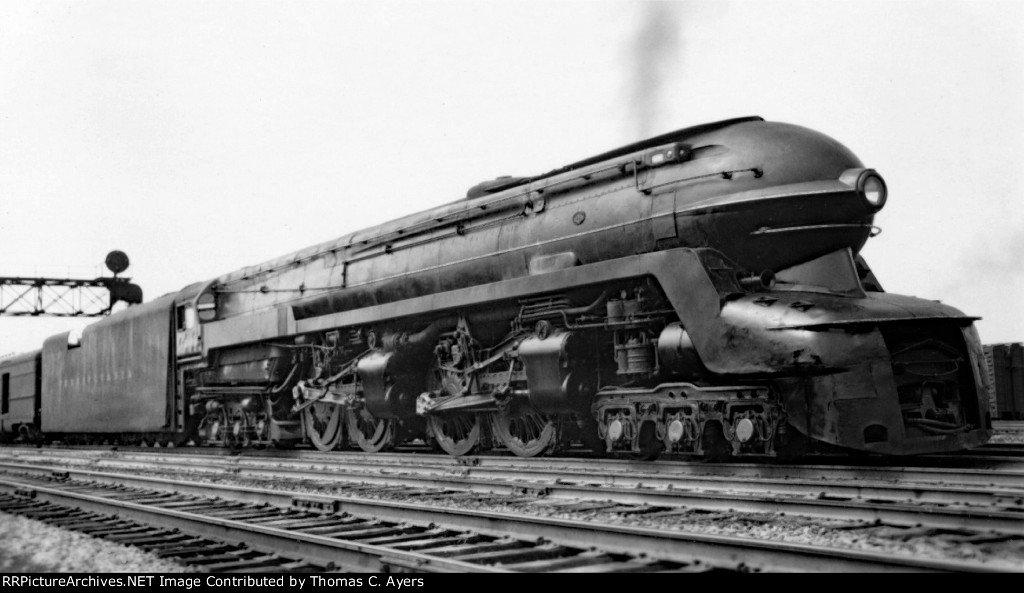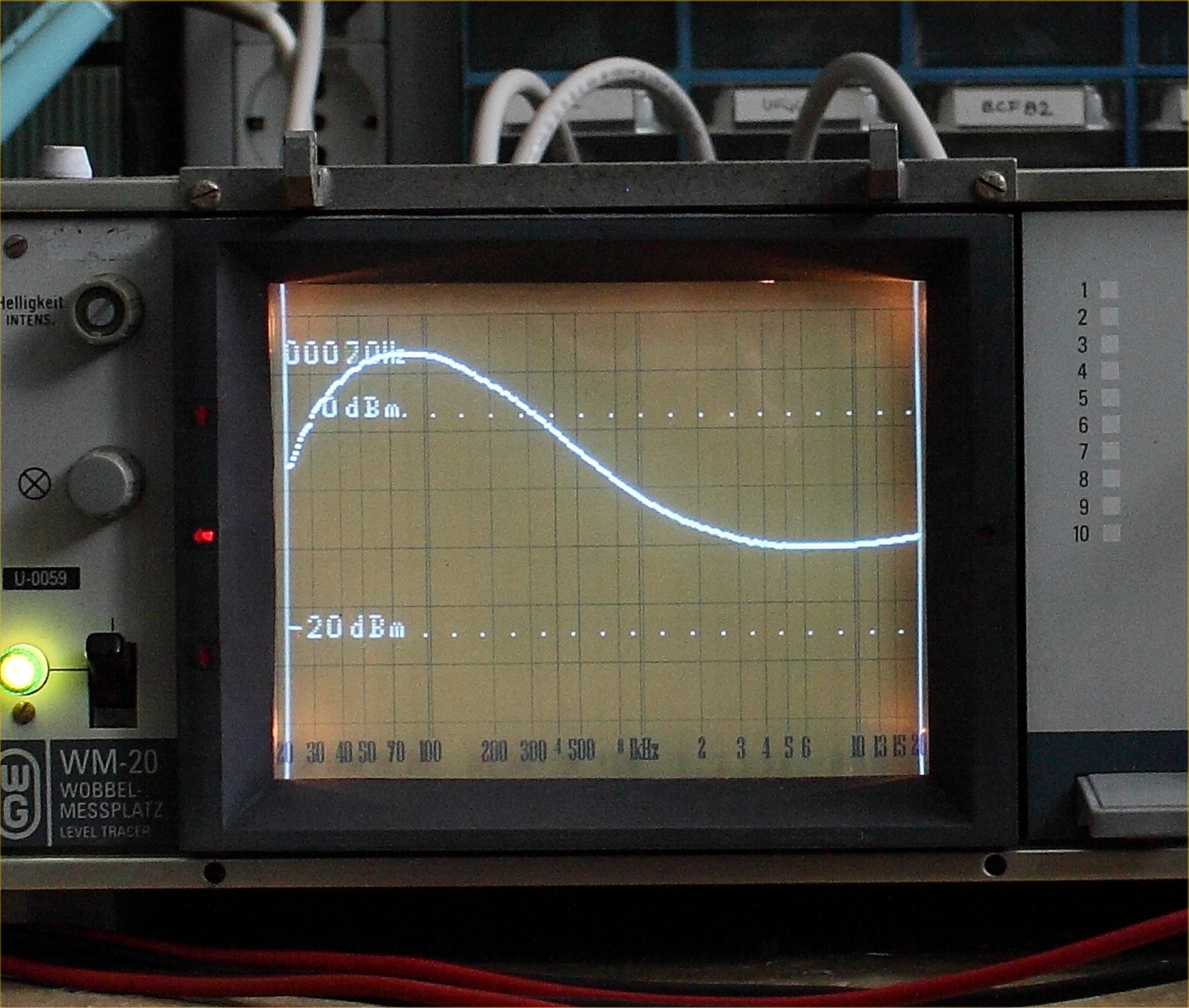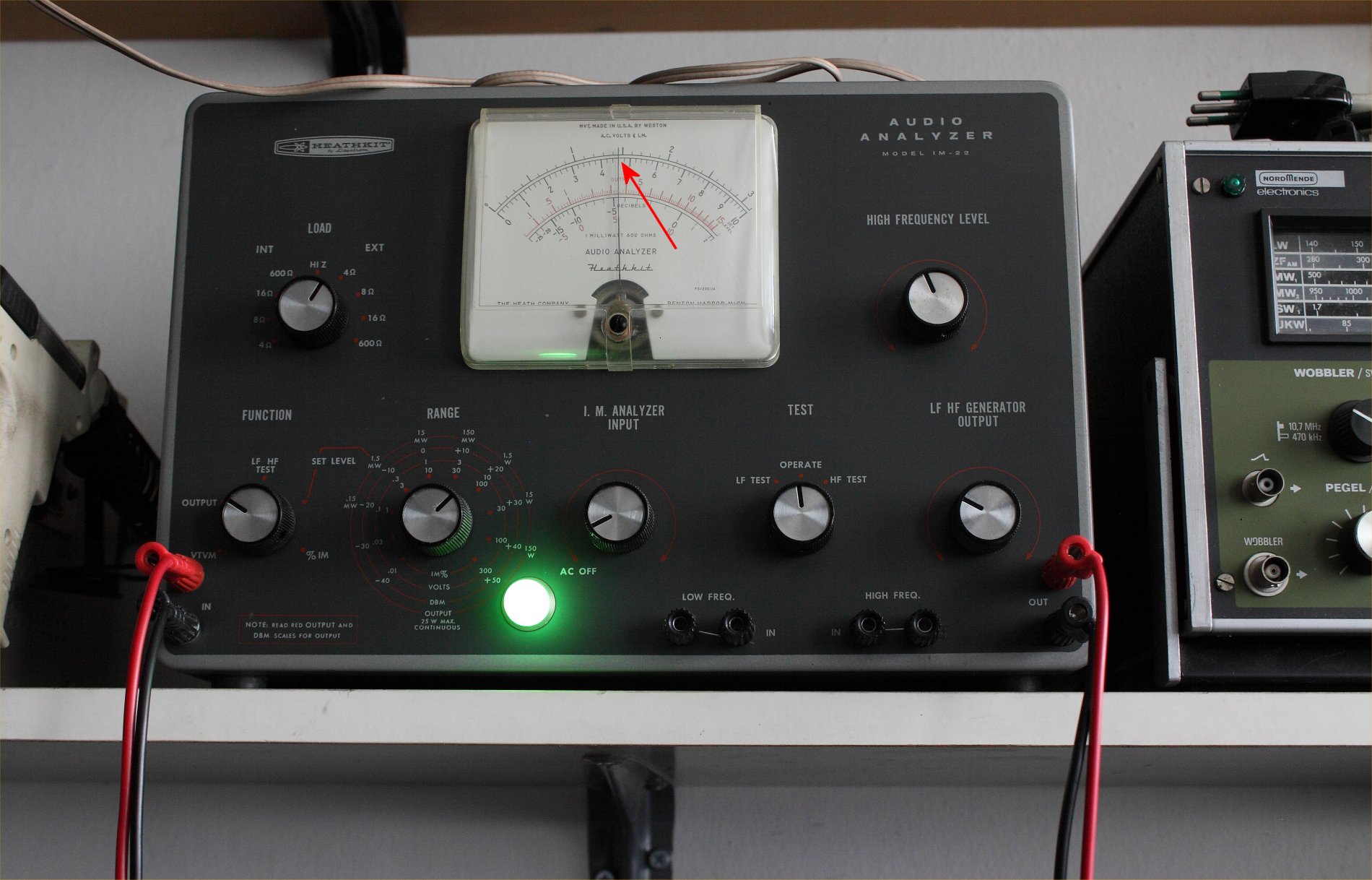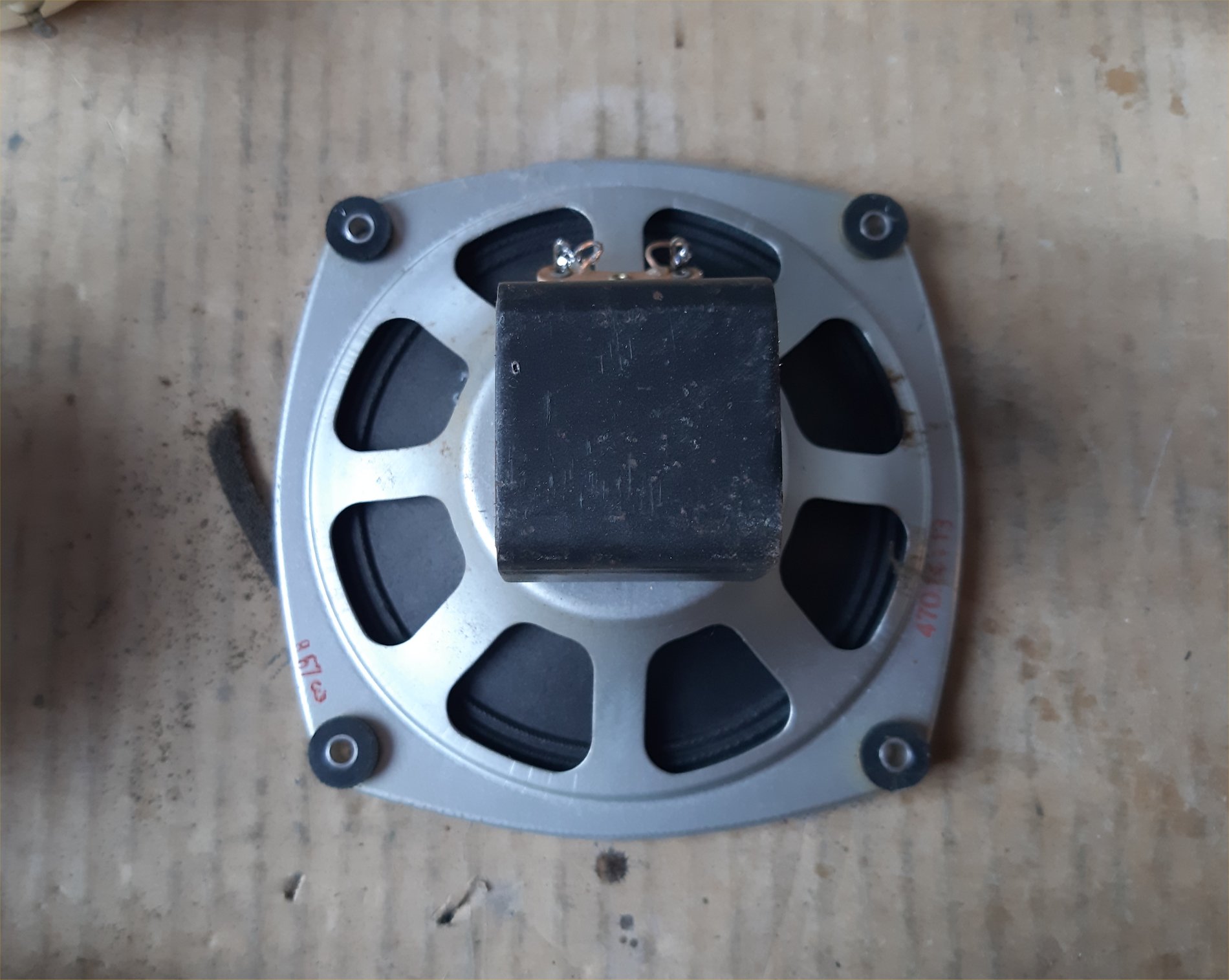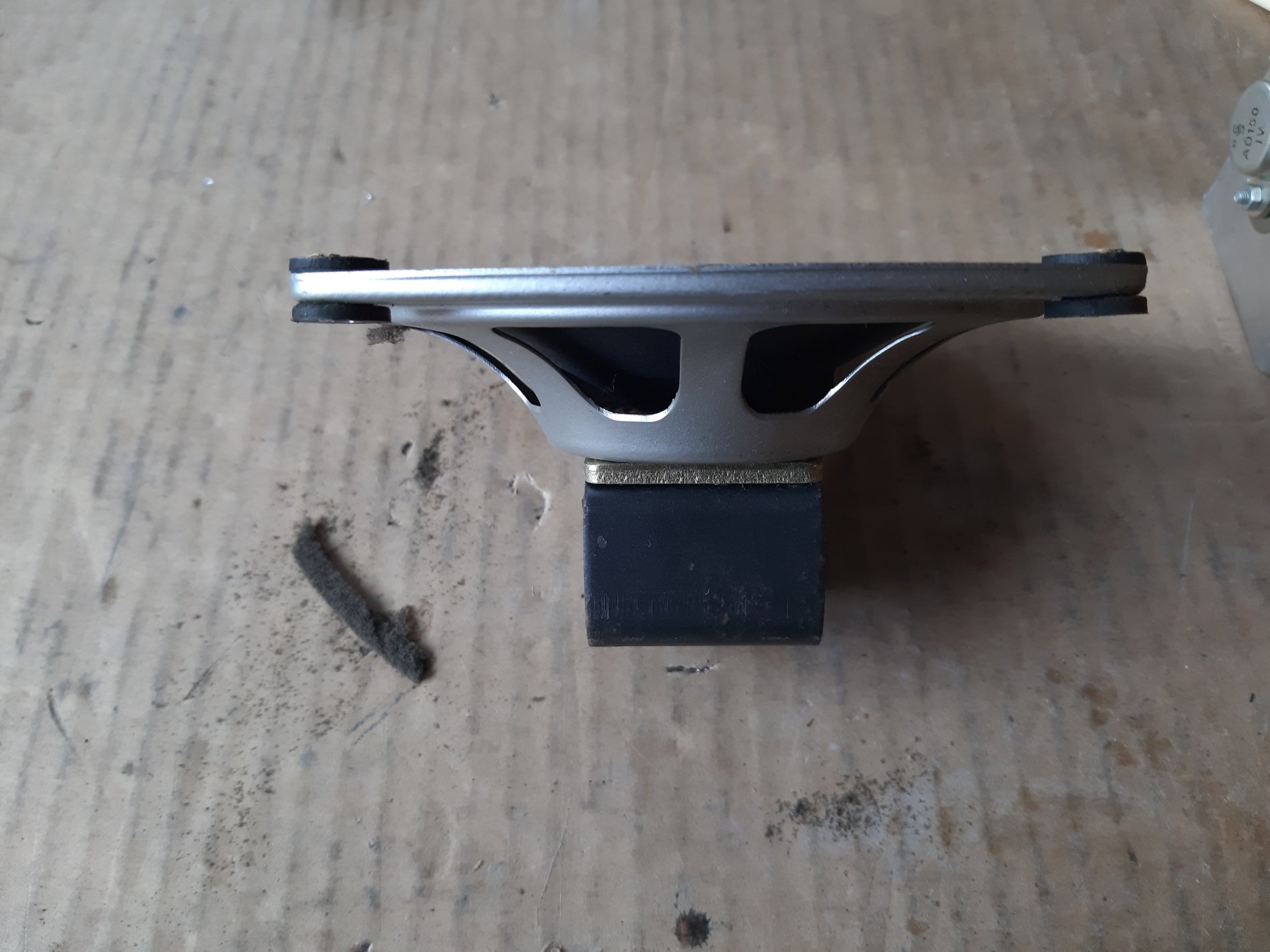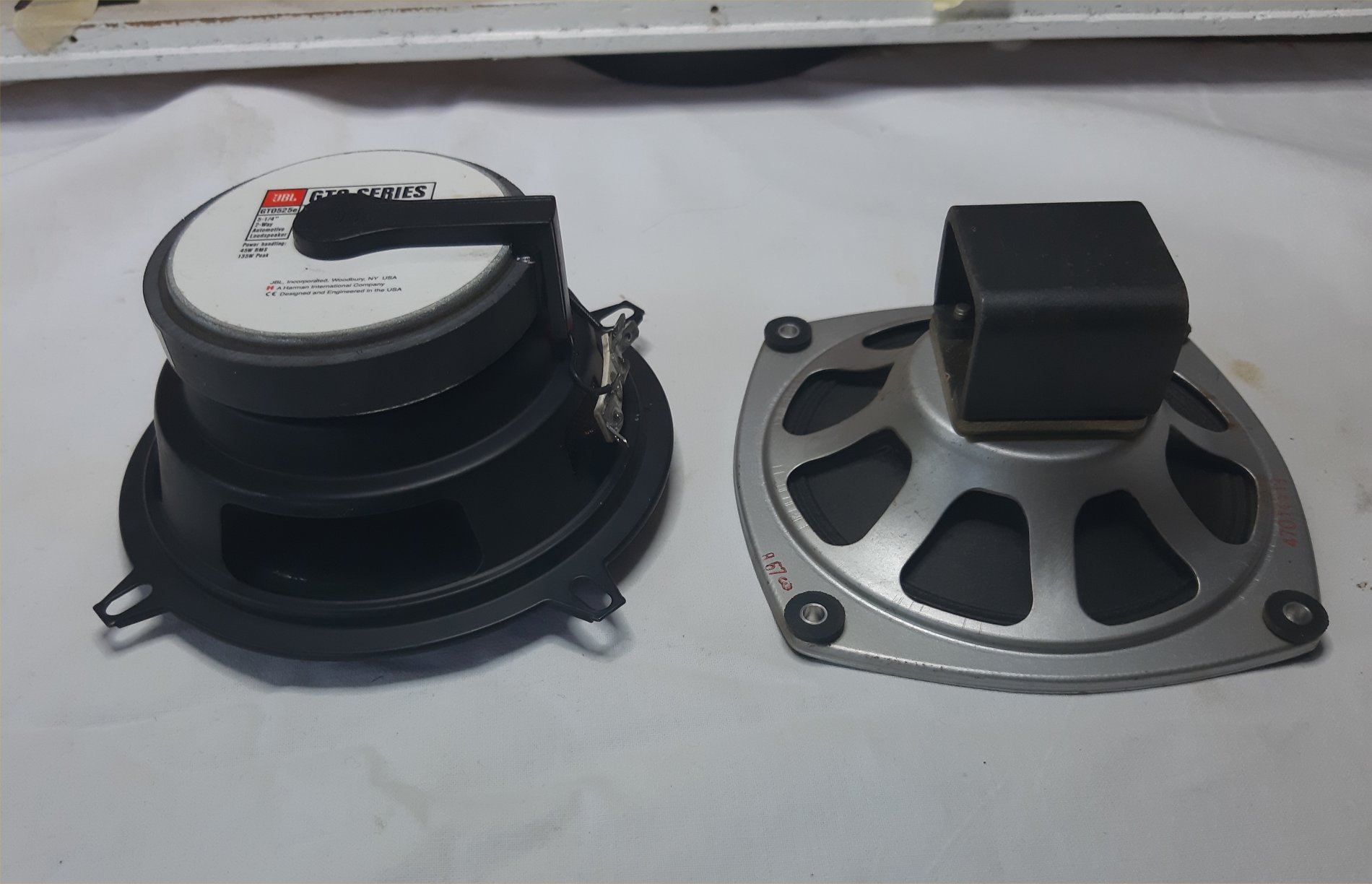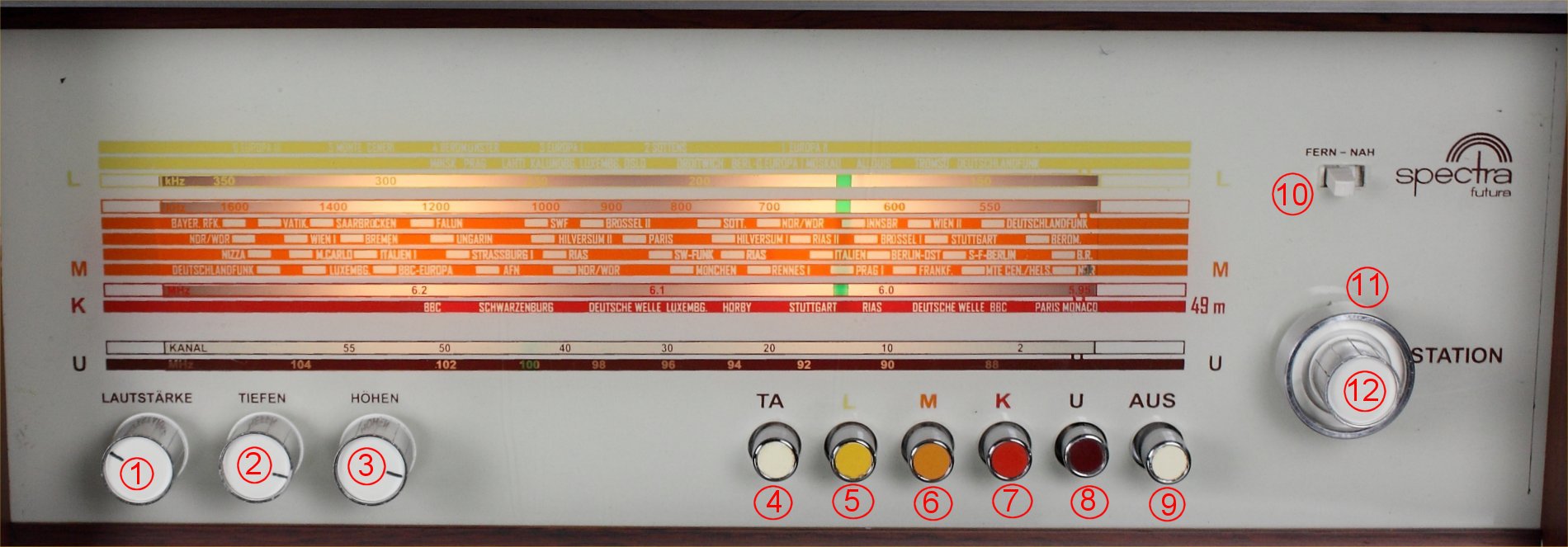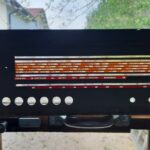 german radios - fr
german radios - fr
Nordmende Tannhauser 59 – fr
- 16th mars 2023
- par giovanni
NOT TRANSLATED YET
NORDMENDE TANNHÄUSER 59
Nordmende Tannhäuser 59
Tannhäuser, nato in una famiglia di cavalieri di Salisburgo, partecipò forse alla sesta crociata del 1228 e fece quindi una vita errante come poeta e cantore. Frequentò la corte di Vienna del duca Federico II.
Secondo una leggenda, nella sua vita Tannhäuser trova il Venusburg (monte di Venere), il regno sotterraneo di Venere, e vive con lei per un anno. Lascia quindi la dea pieno di rimorsi, e intraprende un viaggio fino a Roma, per chiedere perdono al Papa Urbano IV. Il papa gli ricorda che tale peccato porta alla dannazione eterna, e gli promette perdono solo in caso di miracolo: la comparsa di fiori nel suo bastone. Tre giorni dopo Tannhäuser torna a Vienna ed il bastone fiorisce.
La leggenda è stata quindi messa in musica da Richard Wagner con il suo Tannhäuser.
La Nordmende, ai tempi del suo massimo splendore e sviluppo tecnologico volle chiamare Tannhäuser il suo apparecchio più bello mai prodotto.
Un apparecchio studiato per rappresentare il massimo della perfezione tecnica del tempo e costruito con cura maniacale.
Lo stadio finale è composto da una coppia di EL84 in Push-Pull. L'inversione di fase veien effettuata con una sezione del doppio triodo ECC82 in configurazione Cathodyne. Questo tipo di invertitore ha il vantaggio di poter essere collegato direttamente allo stadio precedente.
Tale stadio è costituito dalla sezione rimanente del doppio triodo ECC82 che provvede ad amplificare il segnale dopo l'attenuazione derivante dal circuito del controllo di toni.
Il triodo contenuto nella valvola multifunzione EABC80 costituisce il preamplificatore di ingresso e riceve il segnale da un potenziometro logaritmico con 3 prese intermedie per un complesso ed accuratissimo circuito di controllo fisiologico di volume.
La sezione radio è di altrettanta elevata qualità. E' presente uno stadio di Media Frequenza supplementare allo scopo di aumentare la selettività.
Questo permette una ricezione delle trasmissioni, particolarmente in Modulazione di Frequenza, particolarmente stabile ed esente da disturbi.
Il complesso di altoparlanti è poi veramente imponente. Tutti gli altoparlanti sono di costruzione Isophon.
La riproduzione delle basse e medie frequenze è assicurata da un grande woofer ellittico P 2031/19/105 che misura 31 cm di lunghezza e 20 di altezza.
Agli acuti sono dedicati invece ben 5 altoparlanti costruiti con 3 tecnologie diverse.
Frontalmente abbiamo il medio a cono da 13 cm per una riproduzione morbida e perfettamente integrata con quella del woofer.
Su ciascun lato è stato posto il famoso tweeter a cono HM 10/12/70 ed un tweeter elettrostatico ST HB7.
Come scrisse Baudelaire il Tannhäuser rappresenta la lotta dei due princìpi che hanno scelto il cuore umano come principale campo di battaglia, ossia la carne contro lo spirito.
La Nordmende rese onore a questa grande opera realizzando il suo prodotto migliore.

BLUETOOTH
Ricevitore Bluetooth integrato
PIATTAFORMA MULTICONNESSIONE
Ogni radio viene equipaggiata con uno speciale cavo che permette la connessione con qualsiasi sorgente digitale.
ELABORAZIONI TUBESOUND
- Ricevitore Bluetooth integrato - Questa unità può essere equipaggiata con un ricevitore BLUETOOTH alimentato direttamente dall'apparecchio Questo rende possibile usare l'amplificatore da qualsiasi dispositivo digitale esterno, come IPAD, Smartphone, o sofisticate stazioni multimediali. Potrete ascoltare le vostre Stazioni Web o le vostre musiche preferite senza cavi in giro per la stanza. Su richiesta è possibile anche montare un Ricevitore Wireless.
- Piattaforma Multi Connessione - L'apparecchio viene fornito di un cavo di adattamento che permette di collegarlo a qualsiasi dispositivo digitale come A Iphone, Smartphone, Laptop, CD Player etc. Questo cavo speciale permette di adattare l'impedenza tra l'apparecchio ed i moderni dispositivi. Inoltre i due canali stereofonici vengono fatti confluire in un unico canale monofonico senza incrementare il carico dell'unità sorgente.

LA STORIA
Nel 1923 Otto Hermann Mende fonda a Dresda la Radio H. Mende & Co. Dopo i bombardamenti della fabbrica nel 1945, Martin Mende (figlio del fondatore) crea una nuova società a Brema la North German Mende Broadcast GmbH . Il cui nome viene successivamente cambiato in NORDMENDE.
Negli anni 50 e 60 diventata uno dei produttori tedeschi di radio e TV di maggior prestigio della radio.
Negli anni 70 i televisioni NORDMENDE diventano famosi per i loro telai a schede e per il test rigorosi e controllo di qualità dei prodotti finiti. Ma i costi elevati di tanta qualità si rivelano uno svantaggio competitivo quando il prezzo di televisori a colori ha cominciato a scendere.
Nel 1977 una partecipazione di maggioranza viene venduta ai francesi di Thomson. L'anno seguente, la famiglia vende le azioni rimanenti. Nel 1980, le fabbriche di Brema viene chiusa, NORDMENDE diventando puramente un marchio di proprietà Thomson.
Fonte - Wikipedia
Grazie a Dan Ludington per la foto.
CARATTERISTICHE PRINCIPALI
Anno di produzione: 1957/58
Supereterodina IF 460/10700
10 Circuiti AM
13 Circuiti FM
Gamme d'onda: Onde Medie (OM), Onde Lunghe (OL), Onde Corte (OC), FM (UKW)
Altoparlanti:
1 woofer
3 tweeter a cono
2 tweeter elettrostatici
Dimensioni (LAP): 700 x 420 x 290 mm / 27.6 x 16.5 x 11.4 inch
Peso netto: 16.3 kg / 35 lb 14.4 oz
9 Valvole: ECC85 ECH81 EF89 EF89 EM34 or EM35 EABC80 ECC82 EL84 EL84
Antenna rotante in ferrite.
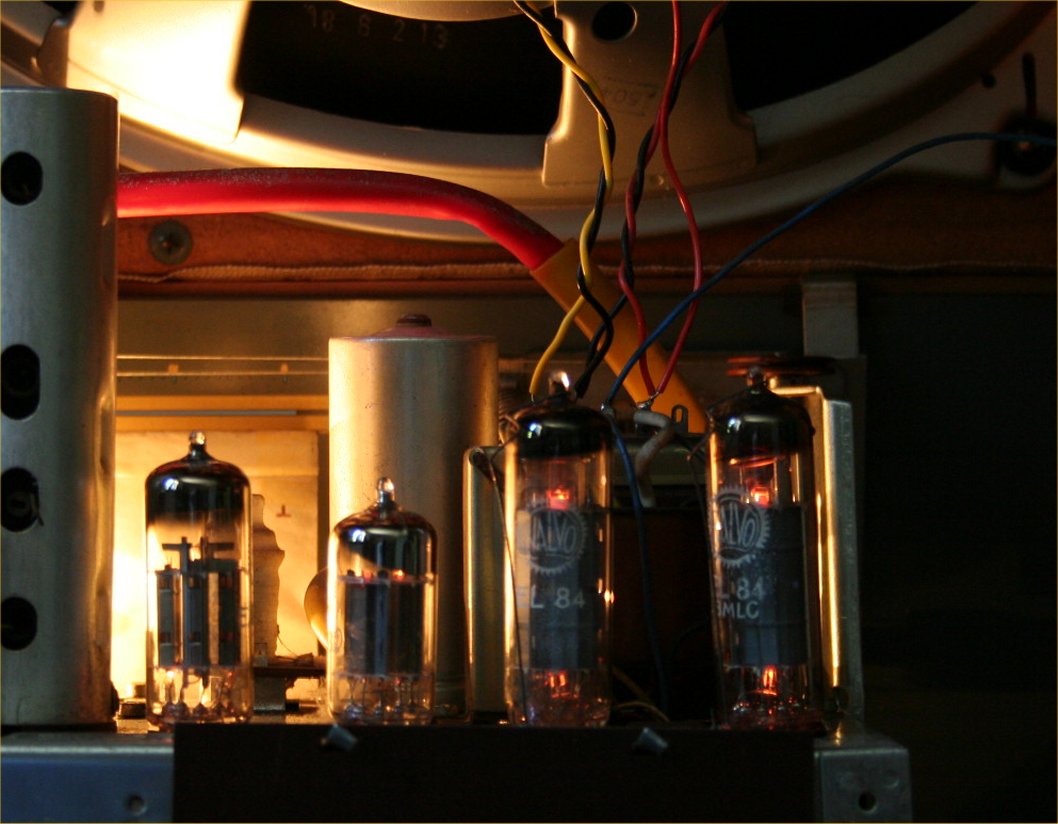
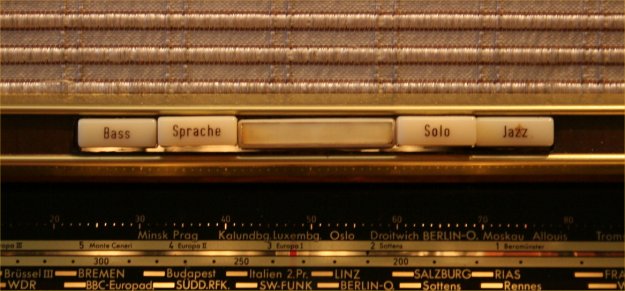
BANDBREITE SCHALTBAR
L'apparecchio è stato dotato di un sistema di correzione della risposta in frequenza indipendente dai controlli di tono.
E' composto da 6 tasti che inseriscono curve di equalizzazione predefinite operanti sul circuito di controreazione (non sono filtri passivi).
Il tasto Bass enfatizza i toni bassi.
Il tasto Sprache enfatizza i toni medi per un ascolto più pulito di trasmissioni parlate.
Il tasto Expander (quello grande centrale) inserisce una curva di controreazione che favorisce leggermente i toni medio bassi aumentando il senso di spazialità.
Il tasto Solo accentua leggermente i toni medi per favorire l'ascolto di strumenti singoli.
Il tasto Jazz enfatizza molto i toni bassi ed alti per favorire l'ascolto di questo genere musicale.
CONTROLLI DI TONO CON INDICAZIONE DEL LIVELLO
Il sistema di controllo dei toni è molto efficiente. Sopra le grandi manopole dei controlli di tono, separate per alti e bassi, troviamo due finestrelle separate che si illumina progressivamente di bianco indicando l'enfasi data alla banda su cui agiscono.
La manopola del controllo degli acuti è collegata alla ferrite nei trasformatori MF e ne fa variare la pendenza della campana del trasformatore stesso. In tal modo, quando si è nelle bande AM, si accentuano ulteriormente i toni acuti già prima dell'arrivo nello stadio amplificatore BF.

Bassi al massimo

Bassi flat
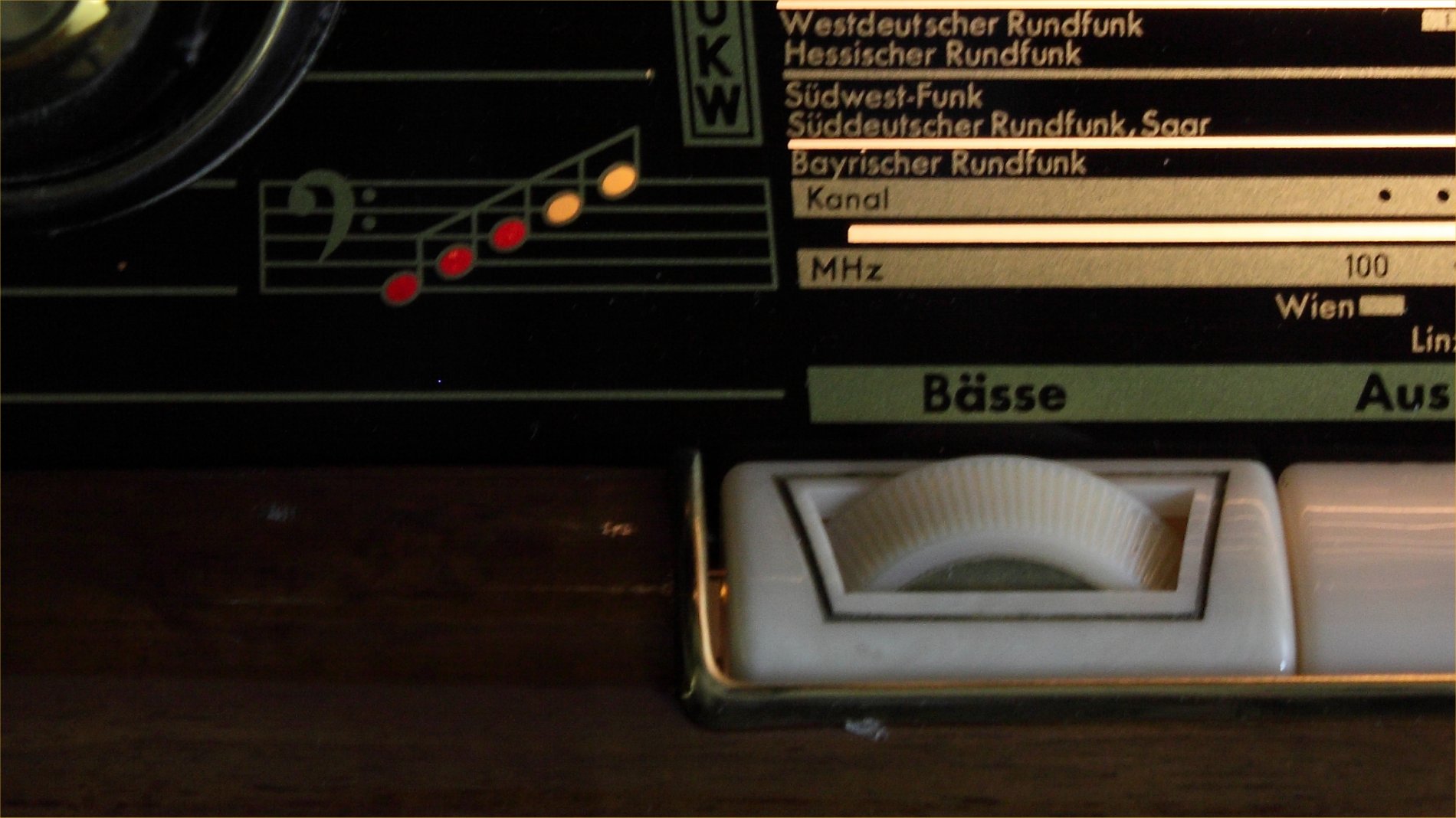
Bassi al minimo

Acuti al minimo

Acuti flat

Acuti al massimo

ANTENNE
All'interno del mobile è presente un dipolo per la ricezione FM ed una antenna in ferrite rotante per la ricezione AM.
La sensibilità in ricezione con le antenne interne è molto buona.
Usando un'antenna esterna la sensibilità migliora ulteriormente.
L'antenna in ferrite può essere ruotata dall'esterno per ottenere una perfetta sintonizzazione dell'apparecchio in AM.
E' visibile nella foto il meccanismo di rotazione e l'indicatore di posizione dell'antenna.
CONTROLLO SINTONIA SEPARATI TRA AM E FM
Il sistema di sintonia è un'altro gioiello.
L'apparecchio è dotato di meccanismi di sintonia separati per le bande AM e per quella di ciascuna delle due bande FM.
La manopola della sintonia è una sola ma un selettore commuta su sistemi di cavi di acciaio e pulegge separati a seconda della banda.
Il movimento è trasferito a ciuscuno dei due meccanismi con un sistema di pulegge a frizione separate.
INDICATORE DI SINTONIA

L'indicatore di sintonia è stato sostituito con uno nuovo.

ALTOPARLANTI
Gli altoparlanti sono 5.
Anteriormente troviamo il più grande larga banda ellittico costruito dalla Isophon molto efficiente e lineare.
Ancora anteriormente troviamo un midrange a cono anch'esso Isophon.
Ai lati per ottenere l'effetto 3D troviamo 2 tweeter a cono e 2 SuperTweeter elettrostatici.
La resa acustica è veramente generosa.
Nessuna radio che io conosca ha la stessa dotazione di altoparlanti.
Sopra la scala, nel pannello altoparlanti troviamo la serie dei tasti del Bandbreite Schltbar illustrata in precedenza.
Scendendo sulla scala parlante, si trova prima di tutto l'occhio magico che indica la perfetta sintonizzazione di ciascuna stazione.
Sotto si trova il comando del volume (con loudness incorporato).
Tirando la manopola del volume si inserisce il circuito che aumenta la selettività nelle bande AM.
Partendo dall'alto sono indicate poi la scala AM per le Onde Lunghe, Medie e Corte, sotto troviamo la scala FM.
Proseguendo verso destra si vede l'indicatore della posizione dell'antenna in ferrite.
Vi è infine la manopola della sintonia, il cui movimento è molto piacevole essendo supportata da un grosso volano.
Coassiale alla manopola di sintonia c'è la manopola per ruotare l'antenna in ferrite.
Sotto da sinistra troviamo la manopola del controllo degli acuti immersa in un piacevole alloggiamento di bachelite con effetto avorio.
Nell'ordine troviamo poi i tasti:
AUS - Spegnimento
TA - Giradischi
TONBAND - Registratore
L - Onde Lunghe
Peil-Ant - Antenna in ferrite per OL e OM
M - Onde Medie
K - Onde Corte
UKW - FM
Alla destra si vede il controllo dei bassi.
Sopra i controlli di tono i rispettivi indicatori dell'enfasi dei controlli stessi.



